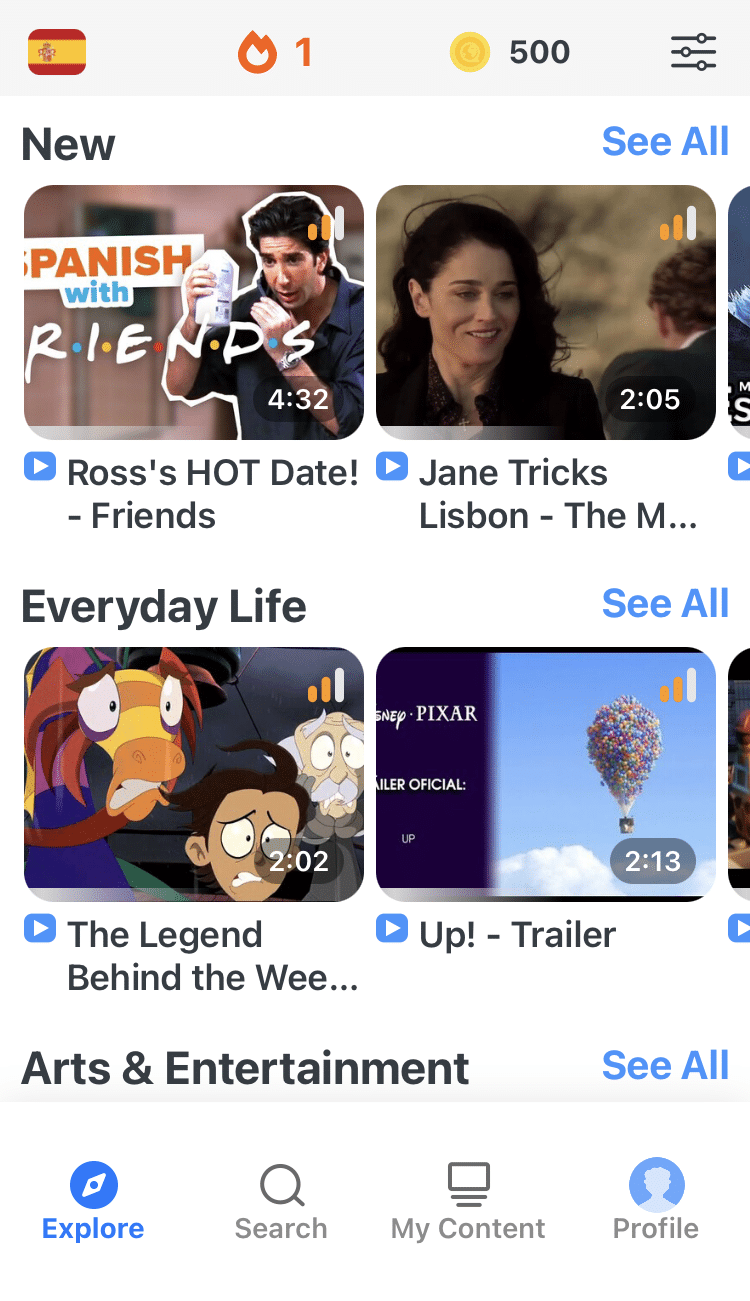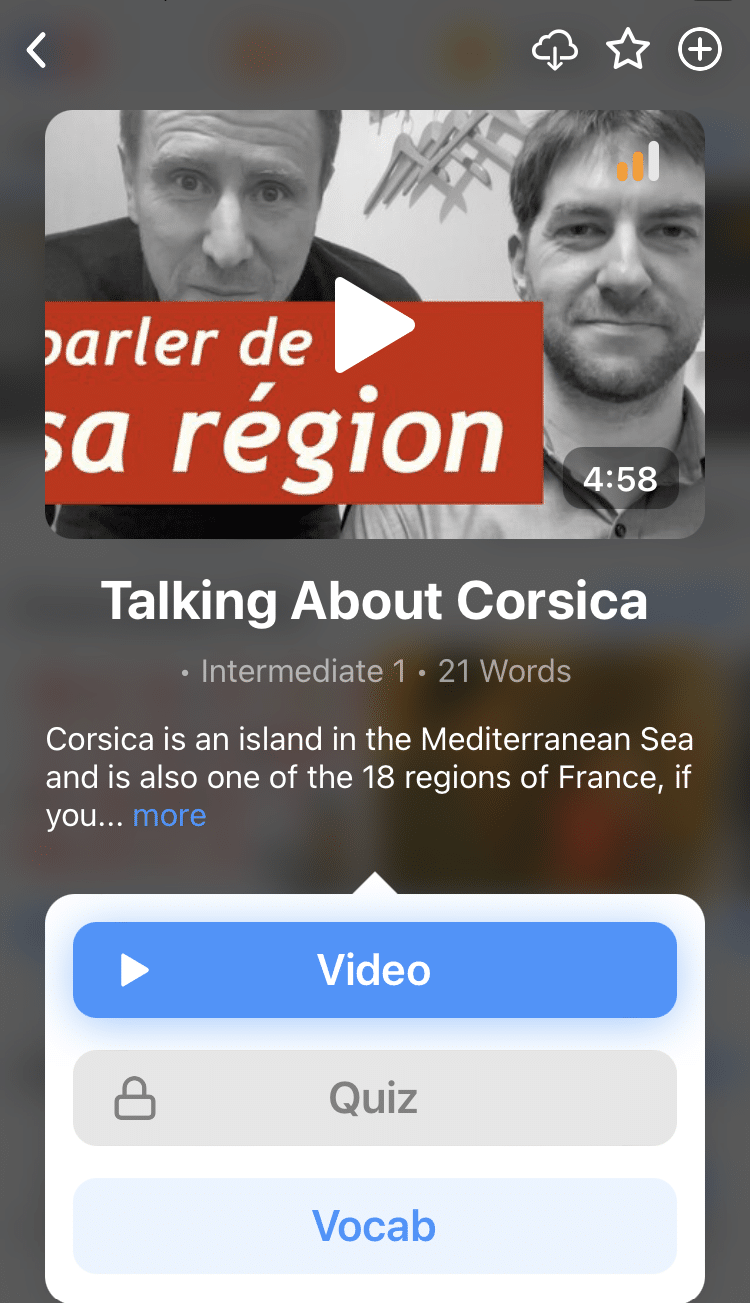
How I Taught Myself a Language (and You Can, Too)
I decided to teach myself a foreign language. With no deadlines, defined goals, homework, quizzes or tests to prepare for, six months had passed and I hadn’t studied at all—I lacked the motivation.
But rather than motivating myself to take action, I decided to take action until I was motivated.
I know I’m not alone in this, so I’m sharing what worked for me. Give my ideas a try and see if you can teach yourself a new language.
Contents
- 1. Learn one phrase per day (bare minimum)
- 2. Add subtitles to everything
- 3. Change the language settings on your phone
- 4. Get connected with other language learners
Download: This blog post is available as a convenient and portable PDF that you can take anywhere. Click here to get a copy. (Download)
1. Learn one phrase per day (bare minimum)
Before you treat your journey to fluency as you would your senior research report, slow it down. What I mean is: Resist the urge to cram! Cramming is not only ineffective in the long run, but it’s also a poor way to be using your time and energy. (This is exactly why SRS was created for effective learning with flashcards).
The Complete Guide to SRS Language Learning
Spaced repetition software lets you easily put new vocabulary into your long-term memory. Click here to learn what exactly it is, how it works, three of the best SRS…
Instead of trying to memorize the most words and phrases in short amounts of time, try the reverse. Choose one phrase a day and commit to it.
Some phrases to consider:
- Excuse me, where can I find the nearest bathroom?
- What time do you wake up in the morning?
- My favorite hobbies are writing and playing video games.
Notice how all of these phrases are jam-packed with useful words, while also being incredibly practical. See also:
The First Words and Phrases to Learn in Any New Language | FluentU Language Learning Blog
Looking for the first phrases to learn in a new language? Learning some of the most common words and phrases will help you start communicating and holding conversations in…
After you’ve selected a phrase, devote an entire day to using that phrase as much as you can. Have fun and be creative when trying to implement your daily phrase. By using the phrase repeatedly and focusing your mental energy on it, your brain will have no choice but to let it stick.
The next day, choose a new phrase to focus on, and repeat the process. Within a few weeks, you will have a useful portfolio of words and phrases that you’ll have a hard time forgetting. And if you do happen to have trouble remembering your daily phrases, stick with the same phrase for three days, or for an entire week
2. Add subtitles to everything
Closed captioning is becoming an increasingly popular option for YouTube content creators. To make the site more appealing to various culture and demographics, YouTube is encouraging viewers to caption videos in other languages. This is a wonderful chance for the site’s content to be more universal, and also a great opportunity for you to learn new languages!
If you have a favorite YouTuber who you religiously watch, go back to some of their videos and turn on the captions. You can do this by clicking the “CC” button alongside the bottom of the video. Then, click the gear icon located next to the “CC” button to adjust the language. While on this screen, you can also adjust the speed, allowing you to make the video slower so that you can follow along more easily.
Try this with a video in your target language: Listen to only the first sentence and hit pause. From here, see if you know what was said, and then check by re-watching with the English captions. Continue listening and pausing the video, going sentence by sentence.
You can also try to imitate a native speaker by memorizing part of the YouTube video. This allows you to match your native language with the language spoken throughout the video. Try to pick out commonly used words or expressions. You never know what you’ll discover!
It’s important to be aware of the potential pitfalls of closed captioning on YouTube. Namely, since it’s an automated process, things can get garbled and what you read won’t always correspond to what the video is actually saying.
Luckily, there’s a program that hand-picks videos from YouTube and gives them accurate subtitles: FluentU.
With FluentU, you hear languages in real-world contexts—the way that native speakers actually use them. Just a quick look will give you an idea of the variety of FluentU videos on offer:

FluentU really takes the grunt work out of learning languages, leaving you with nothing but engaging, effective and efficient learning. It’s already hand-picked the best videos for you and organized them by level and topic. All you have to do is choose any video that strikes your fancy to get started!
Each word in the interactive captions comes with a definition, audio, image, example sentences and more.
Access a complete interactive transcript of every video under the Dialogue tab, and easily review words and phrases from the video under Vocab.
You can use FluentU’s unique adaptive quizzes to learn the vocabulary and phrases from the video through fun questions and exercises. Just swipe left or right to see more examples of the word you're studying.

The program even keeps track of what you’re learning and tells you exactly when it’s time for review, giving you a 100% personalized experience.
Start using the FluentU website on your computer or tablet or, better yet, download the FluentU app from the iTunes or Google Play store. Click here to take advantage of our current sale! (Expires at the end of this month.)
You can also check out the post below:
How to Learn a Language by Turning On Foreign Language Subtitles
Life can be confusing, but foreign language videos don’t have to be. Here are the best subtitle resources and an expert’s tips for getting the most out of them.
3. Change the language settings on your phone
Admit it. You’re already on your phone way more than you should be every day, so why not use the time on your celly to bump up your language learning jelly? Change your phone’s language setting to the desired language you would like to learn.
Now, the next time you instinctively check your phone, you’ll have the added challenge of deciphering your way through different screens and apps. It definitely gets easier over time, which only means one thing—that you’re becoming more comfortable in your target language because you’ve learned new words.
But we can take it a step up. If you have a smartphone that has a built-in operator feature (i.e. Siri), try speaking to the robot in your new language. This can be a really fun way to test your pronunciation and an even more fun way to befriend a robot.
If you’re really adventurous, try using your GPS wherever you go to hear the directions in that language. When I lived in China, being able to navigate myself around the city was crucial. Almost every day, I found myself either asking for directions or telling a driver directions in Mandarin. By practicing with your phone’s built-in GPS, or even the one in your car, you can easily create a roadmap to success in your language learning endeavors. Thanks technology!
How to Unlock Language Learning on Your Phone
Learning a language on your phone may be easier and more exciting than you think! Here’s our ultimate guide to tools and methods for phone-based learning.
4. Get connected with other language learners
Although it may be tempting to learn your new language solo, having a group of like-minded people to support you in your learning can be the make-or-break in your strive for fluency.
Meetup.com is the world’s largest network of local groups. By becoming a member, you can easily organize a local group or find one of the thousands already meeting up face-to-face. More than 9,000 groups get together in local communities each day, each one with the goal of improving themselves or their communities.
Currently, over 420,000 monthly meetups are occurring in 180 countries. Chances are there are many happening in or around your hometown, so give it a shot. You may be able to find a group of other passionate language learners nearby, or you can be the first to get a group started.
With this group, you can share language learning resources, inspire and motivate each other, watch films in your target language, eat at ethnic restaurants where your target language is spoken—and probably gain a few new friends along the way!
9 Best Language Exchange Apps [2024 Edition] | FluentU Language Learning Blog
With language exchange apps, you can practice talking in your target language with a native speaker in no time flat. This post contains nine of the best apps for language…
And there you go! These ideas for how to learn a language by yourself may sound crazy at first glance, but sometimes crazy can be exactly what we need to move forward.
You have nothing to lose in giving these techniques to teach yourself a language a shot, so good luck!
Download: This blog post is available as a convenient and portable PDF that you can take anywhere. Click here to get a copy. (Download)




